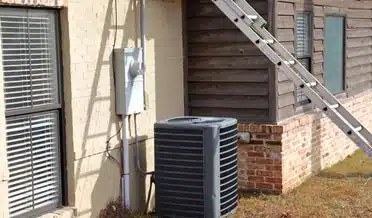How to Hire a Katy AC Installation Contractor
The decision to replace an existing air conditioner or select a system for a new home requires research into two factors:
- High-quality equipment best suited for your home.
- A high-quality contractor to enter your home and professionally install high-quality equipment.
The research will uncover a bunch of contractors who can install a new air conditioning system. How can someone narrow down the search? Here are a few things to avoid in the Katy AC Installation process.
Someone Waiting with AC Installation Equipment
Be wary if a contractor approaches you with equipment ready to install. There are several problems with this approach.
- Air conditioning systems are custom-matched to a space, there is no “one-size-fits-all” with these building systems.
- Sometimes these contractors have access to overstock or unsold equipment at a low price.
The US Department of the Environment has recently discontinued certain refrigerant gases. An outdated system may use such a refrigerant, making it extremely difficult and expensive to replace the refrigerant.
Determining the proper equipment requires an assessment of a home, followed by a load calculation—a technical equation used to determine the proper size system. The assessment gathers information concerning the square footage, insulation R-value, orientation of the home in relationship to the sun, and the number/size of windows and doors. Since these qualities are unique to each home, no one can determine the correct size before making the calculation.
Someone Willing to Cut Corners
Owning and running a business is expensive. Contractors should be willing to verify licenses, insurance, and training certificates.
- Quality contracting companies have location addresses, business licenses, and standing in the community.
- HVAC contractors must carry both liability and workers’ compensation insurance to protect every client.
- HVAC contractors will carry licenses and/or certifications necessary to complete tasks associated with the equipment. For instance, refrigerant gas requires certification to purchase and use.
- HVAC contractors will be able to demonstrate training records. This might include on-the-job training records, licensing training, or factory training for specific equipment.
- Most installations require local permits. A contractor should not be willing to forgo technical steps.
Someone Emphasizing Katy AC Installation Cost
Remember, a low-cost system might be the bargain it is made out to be, but it may cost more in the long run. However, there might be other financial dangers:
- It is tempting to consider a purchase at a “bargain-basement price,” but there are more things to consider than just the initial cost. These systems last between 15 and 20 years, so a decision based on price may haunt you for many years to come.
- A questionable contractor might use pressure tactics, but wise consumers will not fall for this.
- A reputable contractor will not insist that a purchase this size be paid in cash.
Quality AC Installation contractors will seek to meet the needs of the client families by:
- Building a proper business foundation.
- Acquiring the necessary training, both academic and on-the-job.
- Doing the needed assessment and proper load calculations, asking abundant questions, and finding the right solution for every home they service.
Katy AC Installation Experts are Just a Phone Call Away
Let us help keep you cool this summer. Schedule your Katy AC Installation consultation by calling All Cool AC & Heating at 281-238-9292 or contact us via email and let our NATE-certified Katy AC Installation technicians put their experience to work for you.


